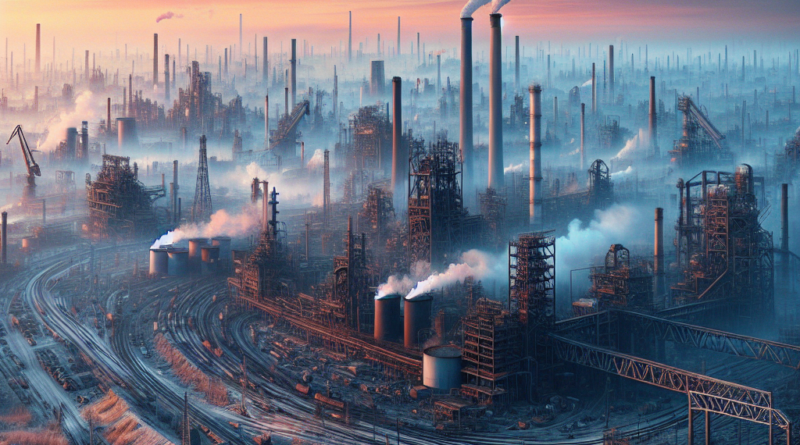The Conflict in Ukraine Boosts Russia’s Rust Belt
The Unexpected Renaissance of Russian Production
While much attention has been given to the Russian oligarchs profiting from the conflict in Ukraine and Putinomics, there is another trend emerging that is worth highlighting.
It revolves around the unexpected resurgence of production in some of the economically depressed areas of Russia.
In the Russian Rust Belt, a term referring to areas affected by economic decline, depopulation, and urban decay due to the contraction of the industrial sector, businesses are thriving.
For instance, the region of Chuvashia in central Russia, with a population of 1.2 million, has seen its Soviet-era factories revived and operating around the clock to supply the military at the front lines.
The Rebirth of the Russian Rust Belt
The ongoing conflict has triggered an economic boom, contrary to predictions that Western sanctions could cripple the Russian economy.
Projections for 2024 are telling: Russia’s economy is expected to grow by 3%, surpassing that of the United States and most European countries.
According to political analyst Ekaterina Kurbangaleeva, the resurgence is evident in regions with manufacturing capabilities and a strong defense industry.
The most underdeveloped regions and low-income segments of the population are the ones benefiting the most.
Understanding what is happening in regions like Chuvashia is crucial for assessing Russia’s long-term ability to sustain the war against Ukraine both economically and politically.
Factories across Russia have shifted production to meet military needs.
Before the conflict, only seven plants in Chuvashia were fulfilling military orders; by October 2022, the number had risen to 36.
By the end of 2023, industrial production had increased in nearly 60% of Russian regions, with Chuvashia boasting a 27% increase compared to the previous year.
The War’s Momentum
By August of last year, Chuvashia’s unemployment rate had dropped to 2.2%.
Companies raised wages to retain workers, with salaries doubling in some cases.
Anton, a Chuvashia worker interviewed by the Financial Times, mentioned that his salary had increased from around 40,000 rubles ($450) per month before the war to 120,000 rubles today.
While most of Chuvashia’s population is employed in the public sector where wages remained unchanged, the region’s average monthly salary reached a record 68,657 rubles in December of the previous year, nearly double the pre-war level.
However, inflation has dampened the wage growth, with prices nationwide rising by over 21% since the start of the war, particularly affecting food costs.
Overall, the conflict has brought unforeseen economic opportunities to regions like Chuvashia, reshaping the industrial landscape and livelihoods of its residents amidst the ongoing geopolitical tensions.




